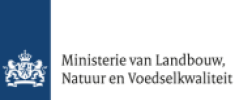
Nieuws
Test with frequent mixing in practice cowshed
The first measurement period in the practical cowshed at Dairy Campus within the framework of the project "Effect of frequent mixing of manure on emissions" is over. With these measurements, we try to gain insight into the effect of frequent mixing of manure on the emissions of methane, nitrous oxide, carbon dioxide and ammonia from a dairy farm.
The aim of the test is to obtain reliable greenhouse gas reduction figures and ammonia emissions when applying various manure mixing techniques in dairy houses. In existing cubicle stables, many manure cellars never become completely empty in practice and old manure is always left behind. This manure is a good breeding ground for rotting processes that lead to greenhouse gases, hydrogen sulphide and ammonia. At Dairy Campus, we investigate to what extent frequent mixing has a positive effect on these processes and can contribute to reducing methane and ammonia emissions. This trial is part of the study Animal Husbandry & Climate and is financed through the Ministry of Agriculture, Nature and Food Quality.
Test in the practical cowshed
In different measuring rounds of about three months, we investigate different mixing methods. We made a distinction between two methods, namely mixing manure with air and mechanical mixing of manure. In the first method, slurry is briefly mixed with air bubbles several times a day every day. In addition, manure is mixed in the regular way, namely by means of a mechanical mixer that "travels the manure". In the practice stable, we have now collected measurement data for these two methods. During this first measurement period, emissions of methane, nitrous oxide, carbon dioxide and ammonia were continuously recorded. And it is also tracked the energy consumption. In one unit the manure in the basement was mixed 4 x 2 hours every day and in the other unit it was 4 x 1 hour. The expected results from this practical test may be relevant for a large group of livestock farmers. This technique can be used in both existing and newly built stables.
This research was funded by the Ministry of Agriculture, Nature and Food Quality in the context of climate policy

